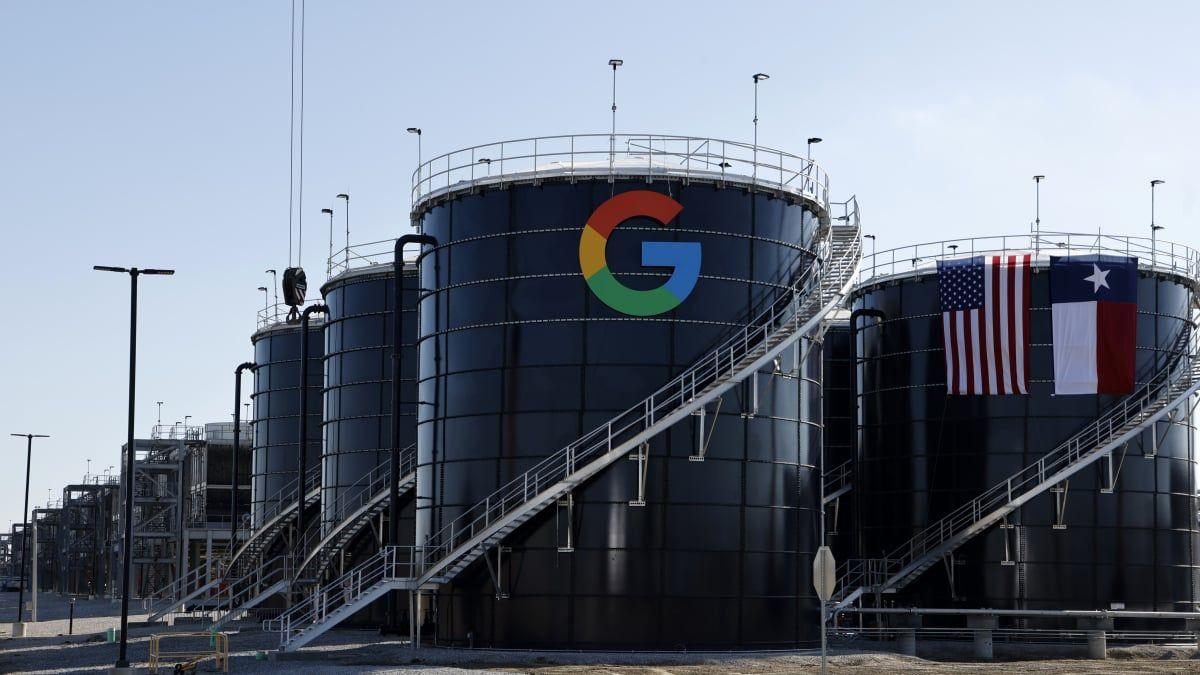Microsoft-Backed VEIR Achieves 3-Megawatt Superconductor Breakthrough for AI Data Centers
2 Sources
2 Sources
[1]
Exclusive: Microsoft-backed VEIR is bringing superconductors to data centers | TechCrunch
Power demands of data centers have grown from tens to 200 kilowatts in just a few years, a pace that has data center developers scrambling to design future facilities that can handle the load. "In the next couple of years, it's going to be 600 kilowatts, and then we're going to a megawatt," Tim Heidel, CEO of Veir, told TechCrunch. "We're speaking to folks that are now trying to wrap their heads around the architecture for how you design data centers that have multi-megawatt racks." At those scales, even the low-voltage cables that bring power to the racks start to take up too much space and generate too much heat. To rein that in, Veir has adapted its superconducting electrical cables to bring them inside the data center. The Microsoft-backed startup's first product will be a cable system capable of carrying 3 megawatts of low-voltage electricity. To demonstrate the technology, Veir built a simulated data center near its headquarters in Massachusetts. The cables will be piloted in data centers next year in advance of an expected 2027 commercial launch, Heidel said. Superconductors are a class of materials that can conduct electricity with zero loss of energy. The only hitch is that they need to be cooled well below freezing temperatures. Veir had previously focused on using superconductors to improve capacity on long-distance transmission lines. But utilities are cautious and tend to be slow to adopt new technology. While there's still a good chance utilities will eventually tap superconductors for high-demand transmission lines, that transition is a bit farther in the future. "The pace at which the data center community is moving, evolving, growing, scaling, and tackling challenges is far higher than the transmission community," Heidel said. Veir has been in talks with data centers for years. Recently, the tenor of those conversations changed. "We were seeing a lot of folks saying, 'Oh this grid interconnection problem is a real thing, and we got to figure out how to solve that.' But then a handful of potential customers started turning around and saying, we actually have really hard problems to solve on our campuses and inside of our buildings," he said. The startup took the same core technology that it had developed for transmission lines and adapted it to the low-voltage needs of data centers. Veir buys the superconductors from the same suppliers, and they're wrapped in a jacket to contain the liquid nitrogen coolant that keeps the material at -196˚ C (-321˚ F). Termination boxes sit at the end of those cables to transition from superconductors to copper cables. "We're really a systems integrator that builds the cooling systems, manufacturers the cables, puts the whole system together in order to deliver an enormous amount of power in a small space," Heidel said. The result are cables that require 20 times less space than copper while carrying power five times farther, Veir said. "The AI and data center community is desperate to find solutions today and is desperate to stay ahead. There's a tremendous amount of competitive pressure to stay at the forefront," Heidel said.
[2]
Microsoft-Backed Startup Hits a Milestone in the Race to Power AI
The race for more advanced AI models has major tech giants like Meta and OpenAI scrambling to build massive new data centers to power their systems. Now, one Microsoft-backed startup says it’s developed a crucial piece of that puzzle. For context, one gigawatt can power roughly 750,000 homesâ€"that’s a lot of power. And getting that much energy flowing through these new data centers presents its own set of challenges. OpenAI’s planned facilities are expected to handle at least 7 gigawatts of compute power, while Meta’s projects aim to add another 6 gigawatts of capacityâ€"even if it doesn't end up using it all for AI. This has led AI companies to take extreme measures, going as far as buying up their own nuclear power plants. Massachusetts-based VEIR, which calls itself a superconducting power delivery solutions company, announced today that its first-generation Superconducting Technology for AI Racks (STAR) demo successfully delivered 3 megawatts of power through a single low-voltage cable. Superconductors are materials that can carry electricity with zero energy loss when kept cold enough. Just one megawatt can power roughly 500 to 1000 homes. The demo was conducted in a simulated data center environment near VEIR headquarters in Woburn, Massachusetts. "The power bottleneck is the single biggest constraint for AI and data center growth," VEIR CEO Tim Heidel said in a press release. "This demonstration marks a major milestone for VEIR and the industry, proving that superconducting power technology can deliver the high-power levels needed in a data center environment, while dramatically reducing the space and weight demanded by traditional systems." The traditional systems at hand rely on copper or aluminum cables and require high voltages to deliver power. They’re also inefficient, losing energy as heat through electrical resistance, and require bulky cooling and safety infrastructure to manage those losses. In contrast, VEIR says its new technology will be able to move up to 10 times more power through smaller cables, a routing footprint for low-voltage power that's 20 times smaller, and up to 5 times the distance coverage compared to conventional systems. Earlier this year, VEIR raised $75 million in Series B funding, with backers including Microsoft’s Climate Innovation Fund, to accelerate commercialization. At the time, Heidel told Bloomberg that the company’s cables use superconducting tapes made of a special material that carries electricity with no electrical resistance and are cooled by liquid nitrogen. The system also allows liquid nitrogen to evaporate, adding extra cooling in the same way sweat evaporation cools the human body. Additionally, the new tech isn’t limited to use in data centers; it could also make utilities and renewable energy facilities more efficient. “One of the biggest challenges for greater availability of clean energy is that improved infrastructure is needed to deliver carbon-free electricity at scale,†said Brandon Middaugh, senior director of Microsoft’s Climate Innovation Fund, in a January press release. “VEIR’s technology can enhance the efficiency and sustainability of energy systems.†In today’s announcement, Heidel said the tech is ready to be deployed, but it remains to be seen how it performs outside of the demo environment.
Share
Share
Copy Link
VEIR successfully demonstrates superconducting cable technology that delivers 3 megawatts through a single low-voltage cable, addressing critical power infrastructure challenges in AI data centers. The technology promises 20 times less space usage and 5 times greater distance coverage than traditional copper systems.
Revolutionary Power Solution for AI Infrastructure
Microsoft-backed startup VEIR has achieved a significant breakthrough in addressing the mounting power challenges facing AI data centers. The Massachusetts-based company successfully demonstrated its Superconducting Technology for AI Racks (STAR) system, delivering 3 megawatts of power through a single low-voltage cable in a simulated data center environment
1
2
.Addressing Escalating Power Demands
The demonstration comes at a critical time as data center power requirements have exploded from tens of kilowatts to 200 kilowatts in recent years. According to VEIR CEO Tim Heidel, the industry is rapidly approaching even more demanding thresholds. "In the next couple of years, it's going to be 600 kilowatts, and then we're going to a megawatt," Heidel explained
1
. The scale of this challenge becomes apparent when considering that major AI companies are planning facilities requiring multiple gigawatts of power - OpenAI's planned facilities are expected to handle at least 7 gigawatts, while Meta's projects aim for another 6 gigawatts of capacity2
.Technical Innovation and Advantages
VEIR's superconducting cables represent a fundamental shift from traditional copper-based systems. The technology utilizes superconducting materials that can conduct electricity with zero energy loss when maintained at extremely low temperatures of -196°C (-321°F) using liquid nitrogen coolant
1
.
Source: Gizmodo
The system includes specialized termination boxes that transition from superconductors to conventional copper cables at endpoints.
The performance improvements are substantial. VEIR's cables require 20 times less space than traditional copper systems while carrying power five times farther
1
. The company claims its technology can move up to 10 times more power through smaller cables with a routing footprint that's 20 times smaller than conventional systems2
.Related Stories
Strategic Pivot and Market Timing
VEIR originally focused on long-distance transmission lines for utilities but pivoted to data centers due to the faster adoption pace in the AI sector. "The pace at which the data center community is moving, evolving, growing, scaling, and tackling challenges is far higher than the transmission community," Heidel noted
1
. This strategic shift reflects the urgency within the AI industry to solve infrastructure bottlenecks that could limit future growth.Commercialization Timeline and Backing
The company plans to pilot its cables in actual data centers next year, with commercial launch expected in 2027
1
. VEIR has secured significant financial backing, raising $75 million in Series B funding earlier this year from investors including Microsoft's Climate Innovation Fund2
. Microsoft's involvement reflects the broader industry recognition that power infrastructure represents a critical bottleneck for AI advancement.References
Summarized by
Navi
[1]
Related Stories
AI's Energy Dilemma: Data Centers Push Power Grids to the Limit
15 Oct 2024•Technology

AI's Surging Energy Demands Pose Challenges and Opportunities for Power Grids
27 Jun 2025•Technology
AI Data Centers Drive $580 Billion Investment Surge as Power Grid Struggles to Keep Pace
10 Nov 2025•Business and Economy

Recent Highlights
1
Google launches Gemini 3 Flash as default AI model, delivering speed with Pro-grade reasoning
Technology

2
OpenAI launches GPT Image 1.5 as AI image generator war with Google intensifies
Technology

3
OpenAI launches ChatGPT app store, opening doors for third-party developers to build AI-powered apps
Technology






